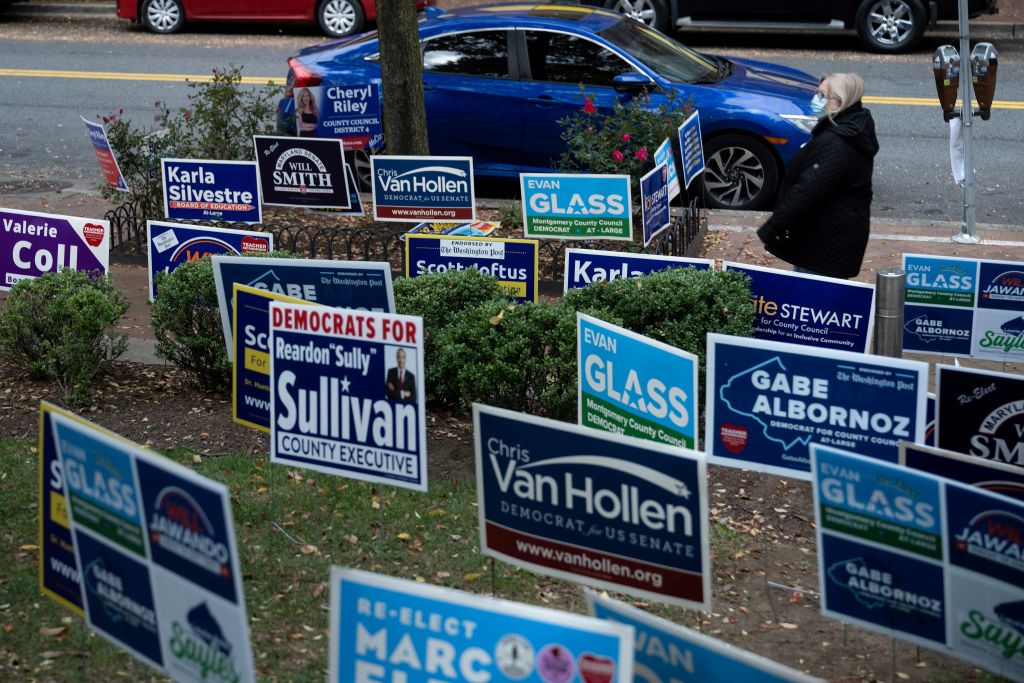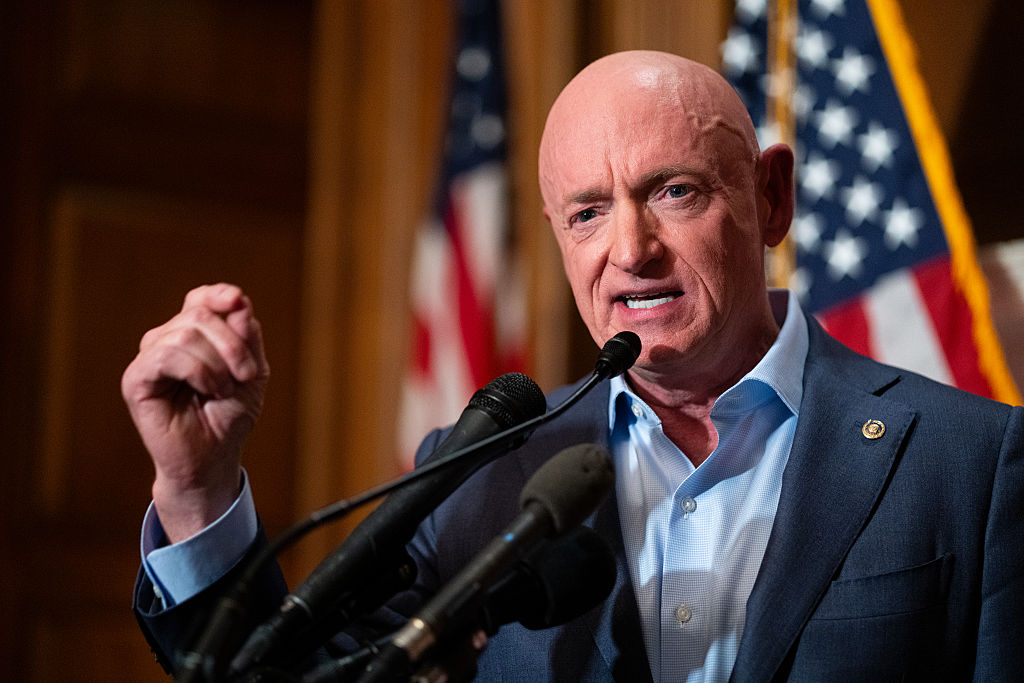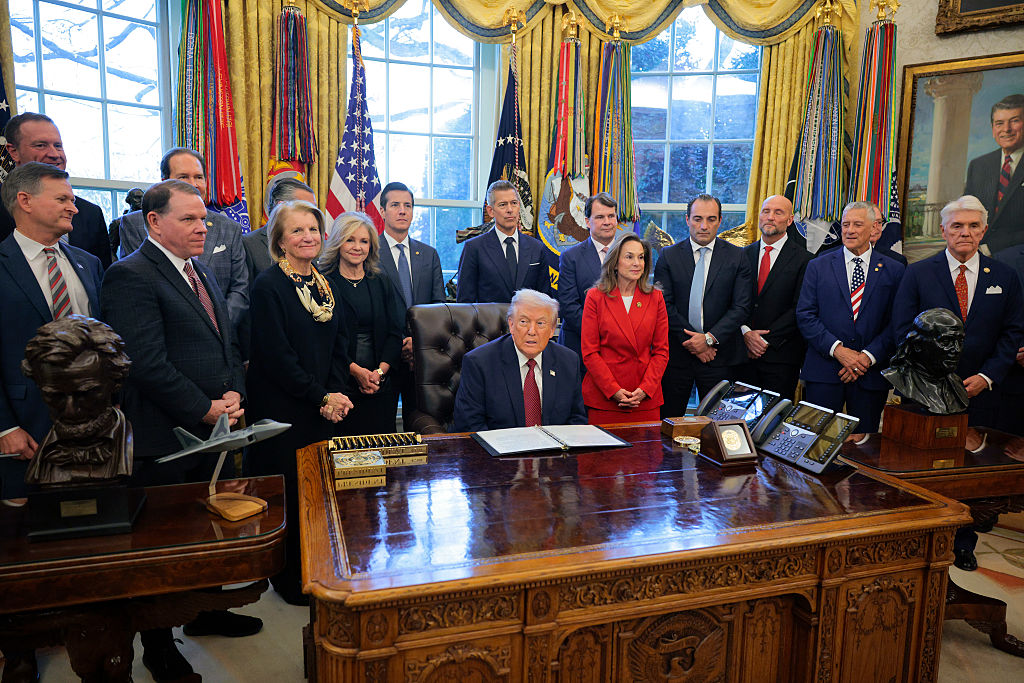All signs point to a red wave
It’s now just under two weeks until the midterms. Judging by the mood music on both sides of the aisle, all signs point to a very good night for the Republican Party.
In the last few weeks, Democratic anxiety that their summer bounce had faded has morphed into something approaching a full-blown panic. The party’s closing message has shifted away from abortion and democracy — themes that many Democrats had hoped could deliver a stronger-than-expected showing come November — and onto the economy and healthcare. Look at the flight paths of the party’s big beasts as well as where last-minute money is being spent, and it all indicates a party playing defense — and struggling.
Meanwhile, the Republicans grow more bullish, and are spending accordingly. GOP campaigns and outside groups are splashing the cash on the core message they have stuck to all along, focusing on inflation, crime and immigration. Happily for the party hoping to wrestle back control of Congress, these also happen to be the top concerns of American voters.
What might all of this mean come election night?
The Senate map features a large number of states in play. RealClearPolitics lists six toss-up races: Arizona, Georgia, New Hampshire, Nevada, Pennsylvania and Wisconsin. According to RCP’s adjusted poll average, the GOP is on course to hold Pennsylvania and Wisconsin and pick up Nevada, Arizona and Georgia. If the rest of the map goes the way most expect, that would give the Republicans 53 Senators to the Democrats’ 47. In other words, a decisive win.
FiveThirtyEight’s model is a little less bullish on the Republicans’ chances, describing the Senate race as a “dead heat.” But anyone looking at the polls comes to the same conclusion: that control of the upper house will come down to a handful of very close races. Remember: this cycle’s map favors Democrats, though optimistic Republicans would point to the direction of travel in the polls. In practically every big race, recent polls show voters starting to break for the Republican Party. Add to that the fact that pollsters have undercounted Republican votes in most states in the last few election cycles, and you have a midterm contest in which a full-blown red tsunami is very possible.
In the House, the question of who will be in the majority gets clearer by the day. Generic congressional polls hand the Republicans sizable leads, and forecasters and modelers see a substantial GOP majority as the most likely outcome. According to RCP’s model, even if every toss-up race broke for the Democrats, the Republicans would still gain control of the House.
This is the point at which I offer the usual health warnings about polls and the fact that there are still weeks to go. But even if you have an understandable aversion to polls and models, they at least chime with other indicators.
The president is unpopular and his party seems to be at odds with voters on the issues which they say are their top priority. Inflation remains a major issue and voters are gloomy about the state of the economy and the country. With two weeks to go, these basic dynamics now seem locked in. Midterms tend to be a referendum on the party in power, and Democrats have every reason to believe that the verdict will be unfavorable.
Paul Pelosi attacked, suspect arrested
Paul Pelosi, 82, is in the hospital after an attack at his home in San Francisco. According to a statement from a spokesman for Nancy Peolsi, the Speaker of the House’s husband was “violently assaulted” last night. He is expected to make a full recovery. The Associated Press reports that the assailant entered the Pelosi residence shouting, “Where is Nancy, where is Nancy?” and was armed with a hammer. An AP source identified the suspect as David Depape, a Berkeley resident.
Musk buys Twitter
He actually did it. After a months-long acquisition saga, Elon Musk now owns Twitter. The acquisition was confirmed Thursday and prompted a rather melodramatic freakout from some of the platform’s most avid users. (Cockburn has rounded up some of the silliest examples.) Musk wasted no time in making his mark, with the company’s CEO, Parag Agrawal, departing, along with a number of other senior executives. “The bird is freed,” tweeted Musk.
*** Sign up to receive the DC Diary in your inbox here ***
What you should be reading today
Michael R. Auslin: Welcome to the age of nuclear blackmail
Matt Purple: Democrats are losing because liberalism has become cruel
John Pietro: The strange alliance between progressives and natcons
John F. Harris, Politico: Democrats debate themselves: why do we suck?
Erik Wemple, Washington Post: James Bennet was right
Mike Solana, Pirate Wires: Elon Musk has taken Twitter, Day Zero
Poll watch
President Biden job approval
Approve: 43.1 percent
Disapprove: 53.8 percent
Net approval: -10.7 (RCP Average)
Nevada Senate race
Adam Laxalt (R): 46 percent
Catherine Cortez Masto (D): 50 percent (Trafalgar)
























